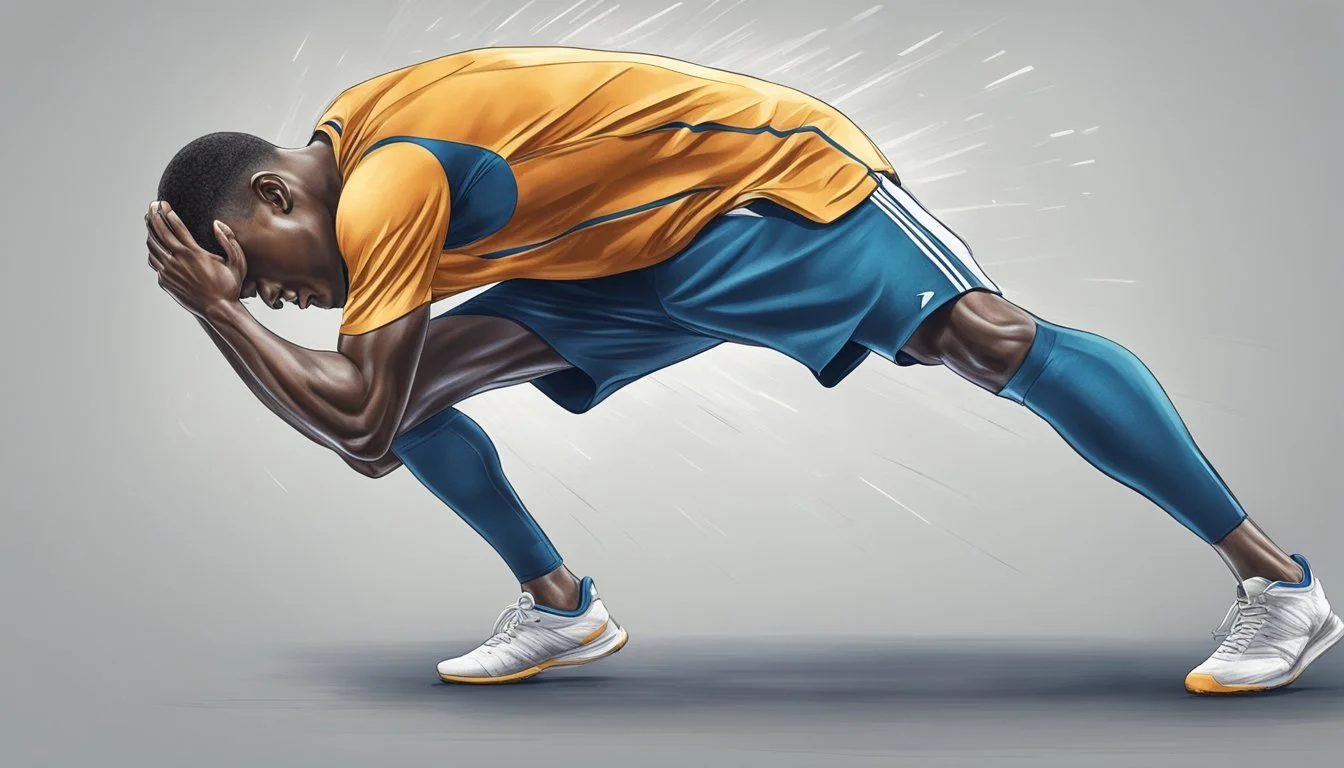4 Types of Trauma That Can Occur in Sports
Understanding the Risks
Sports are an integral part of many individuals' lives, offering physical fitness, camaraderie, and personal achievement. However, they also come with the risk of various types of trauma. Engagement in sports can lead to injuries that affect different parts of the body, ranging from minor strains to more severe conditions.
Understanding these types of trauma can help athletes and coaches take preventive measures and seek appropriate treatment when necessary. This article explores the various forms of trauma that athletes may encounter, offering insights into their causes and possible treatments. By being informed, participants can continue to enjoy sports while minimizing the risk of injury.
1) Concussions in Contact Sports
Concussions are a common form of traumatic brain injury in contact sports. They typically result from a blow to the head or a violent collision during activities like football or soccer. These injuries can cause temporary loss of normal brain function and require immediate medical attention.
A study of concussion trends in U.S. high school sports found that most concussions were caused by contact with another person (62%), surfaces (17%), or equipment (15%). The rates of recurrent concussions have decreased over the years, indicating improved awareness and preventive measures.
Rotational acceleration and shear forces are believed to be primary causes of concussions. These forces impact the brain's function, leading to symptoms such as headache, confusion, dizziness, and nausea. Immediate diagnosis and proper management are crucial to prevent long-term consequences.
In contact sports, referees and coaches play a vital role in addressing concussions. They can stop a game or remove a player if a concussion is suspected. This precautionary approach helps in minimizing further injury and ensuring player safety.
Parents and guardians should stay informed about the signs and symptoms of concussions. It’s essential to follow evidence-based guidelines for sideline assessment and care to protect young athletes.
2) ACL Tears in Soccer and Basketball
ACL injuries are particularly prevalent in sports like soccer and basketball. These sports involve frequent sudden stops, changes in direction, and jumping movements, all of which put strain on the anterior cruciate ligament (ACL).
In soccer, the risk of ACL tears can result from pivoting and rapid directional changes. These movements are routine during play, contributing to the relatively high incidence of these injuries among soccer players. Research indicates that elite soccer players experience ACL injuries at a rate of 0.2 to 0.4 per 1000 player-hours of exposure.
Basketball also poses a significant risk for ACL tears. The high-intensity nature of the sport, with constant jumps and abrupt stops, makes the knee joint vulnerable. Athletes often hear or feel a "pop" when the ACL is injured, and the knee may swell and feel unstable.
Both soccer and basketball require extensive physical conditioning and proper technique to minimize the risk of ACL tears. Athletic training that focuses on strengthening the muscles around the knee and improving agility can help reduce injury rates in these sports. For more detailed statistics and information, the Mayo Clinic and various sports medicine resources provide valuable insights into the incidence and prevention of ACL injuries.
3) Shoulder Dislocations in Rugby
Shoulder dislocations are a common and significant injury in rugby. These injuries account for about 20% of all rugby-related injuries, with the shoulder being the second most commonly injured joint after the knee.
The most frequent mechanism for these injuries is the tackle, responsible for 49% of shoulder dislocations. This contact-intensive sport often sees direct impacts and collisions, making shoulder injuries prevalent among players.
Symptoms of a dislocated shoulder include severe pain, swelling, and reduced mobility. Players might also feel a sense of instability in the shoulder joint. Immediate care is crucial to manage pain and prevent further damage.
Recurrent shoulder dislocations are a major concern, with research indicating that 35% of shoulder injuries in rugby are recurrences. Proper treatment and rehabilitation are essential to reduce the risk of future injuries and ensure a full recovery.
Diagnosis typically involves a combination of physical evaluations and imaging tests, such as X-rays or MRIs. These tools help identify the extent of the injury and inform appropriate treatment strategies.
Effective prevention strategies include proper tackling techniques, strength training, and conditioning. Emphasis on shoulder stability and strength can help mitigate the risk of dislocations.
4) Fractures in Extreme Sports
Fractures are a common injury in extreme sports due to the high-risk nature of these activities. Extreme sports often involve high speeds, significant heights, and intense physical exertion. These elements increase the likelihood of fractures occurring.
Athletes in disciplines such as rock climbing, snowboarding, and motocross frequently encounter bone fractures. The impact from falls or collisions can lead to breaks in bones like the tibia, fibula, and radius.
The use of specialized equipment in extreme sports, while offering some protection, does not eliminate the risk. Activities like skateboarding and BMX biking are notorious for causing wrist and forearm fractures when athletes attempt to break their fall with their arms.
Prompt and effective treatment is crucial to ensure proper healing and to avoid complications. Managing these injuries often requires immobilization, physical therapy, and, in severe cases, surgical intervention.
By understanding the risks and employing safety measures, athletes can better prepare to avoid fractures. Awareness of proper techniques and the use of safety gear remain essential components in reducing the occurrence of these injuries in extreme sports.
Understanding Trauma in Sports
Trauma in sports involves both physical injuries and psychological effects that result from participating in athletic activities. These traumas can significantly impact athletes' performance and overall well-being.
Definition of Trauma in Sports
Trauma in sports refers to injuries and mental stress experienced due to athletic activities. Physical trauma includes injuries like sprains, fractures, and muscle tears.
Psychological trauma can occur from experiences such as intense competition, failure, or witnessing severe injuries. Both types of trauma require appropriate responses to ensure athletes recover fully.
Common Causes of Sports Trauma
Several factors can lead to sports trauma. Physical trauma often results from accidents, overuse of muscles, or inadequate warm-ups. Common injuries include muscle sprains, ligament tears, and broken bones.
Psychological trauma in sports can stem from high expectations, pressure to perform, and stressful environments. These elements can combine, leading to a range of issues that need careful management to maintain athletes' health.
Physical Trauma
Physical trauma in sports refers to injuries that affect an athlete's body, including muscles, bones, tendons, and ligaments. These injuries can vary greatly in severity and impact on the athlete's performance and health.
Types of Physical Injuries
Physical injuries in sports are diverse. The most common types include muscle sprains and strains, which occur when muscles or their connecting tendons are overstretched or torn. Ligament tears, such as those of the ACL in the knee, result from twisting motions or impacts.
Fractured bones are another frequent injury, typically caused by direct impacts or falls. Dislocations happen when bones are forced out of their normal positions in joints. Head injuries, including concussions, are serious and require immediate medical attention. These types of injuries necessitate different treatments based on severity and location.
Recovery and Rehabilitation
Recovery from physical trauma begins with accurate diagnosis and appropriate initial care. This often includes rest, ice, compression, and elevation (RICE) for minor injuries. More serious injuries, like fractures or severe ligament tears, may require immobilization, physical therapy, or surgical intervention.
Physical therapy plays a crucial role in rehabilitation, helping to restore function and strength. Rehabilitation programs are tailored to the injury and the athlete, often encompassing exercises to improve flexibility, strength, and balance. The goal is to enable athletes to return to sports safely, minimizing the risk of re-injury through preventive strategies.
Proper care and structured recovery plans are essential for effective healing and return to sport.
Emotional Trauma
Emotional trauma in sports can significantly affect athletes, disrupting their mental well-being and performance. This trauma often requires comprehensive support systems to aid in recovery and resilience.
Impact of Emotional Trauma on Athletes
Athletes experiencing emotional trauma may face numerous challenges. Symptoms can include anxiety, depression, and a sense of overwhelming stress. These can hinder focus, motivation, and overall performance.
Additionally, emotional trauma can manifest physically through sleep disturbances or appetite changes. The pressure to perform can exacerbate these symptoms, creating a cycle of stress and underperformance.
This type of trauma isn’t always visible, making it crucial for coaches and teammates to recognize behavioral changes. Identifying early signs can lead to timely and effective interventions.
Emotional trauma can also stem from physical injuries, as the stress of recovery and fear of re-injury weigh heavily on an athlete’s mind.
Support Systems for Emotional Recovery
Creating robust support systems is essential for athletes dealing with emotional trauma. Professional counseling and sports psychologists play a key role in providing emotional and mental health support.
Peer support from teammates can foster a sense of community and understanding. It's also beneficial for teams to have regular mental health check-ins and workshops to address and normalize these issues.
Coaching staff must be trained to handle psychological aspects and encouraged to develop strong, trust-based relationships with athletes. They can initiate open conversations and ensure an environment where athletes feel safe to express their struggles.
Utilizing techniques such as mindfulness and relaxation exercises can also help athletes manage stress and recover emotionally. Encouraging a balanced lifestyle with sufficient rest and recreation outside of sports is vital for holistic recovery.



